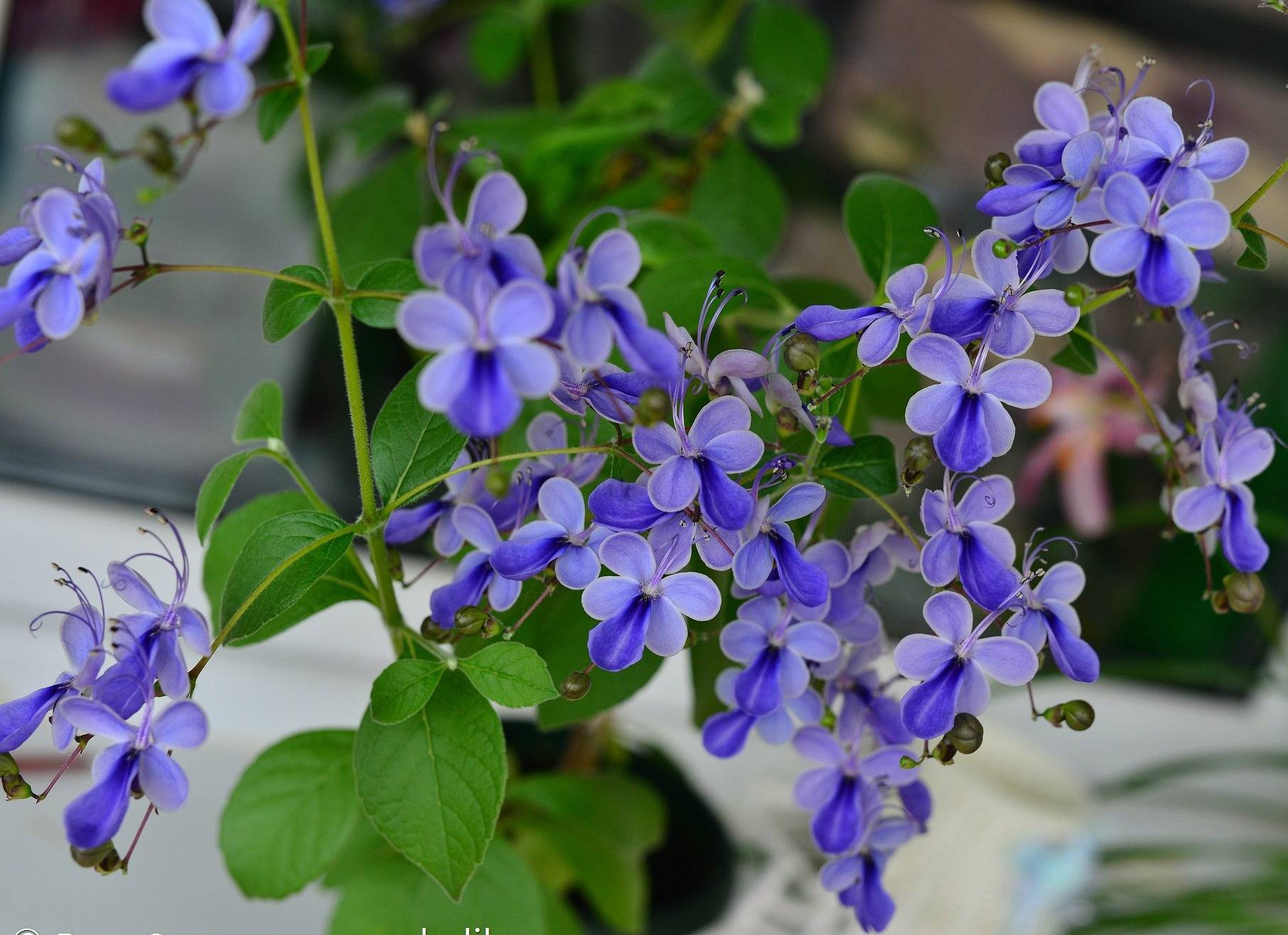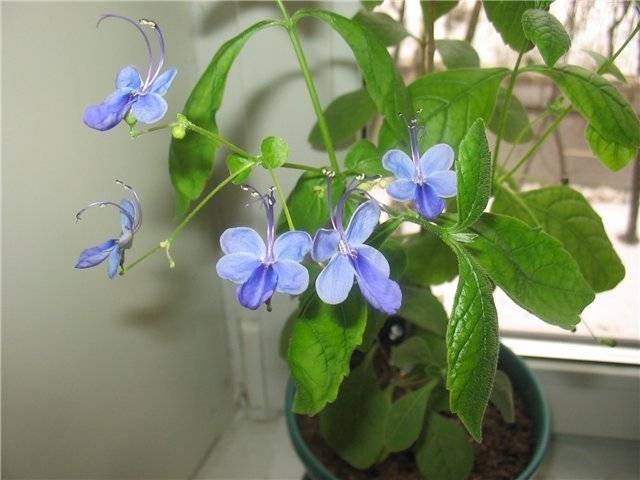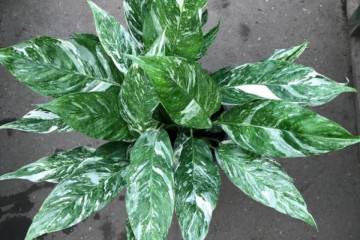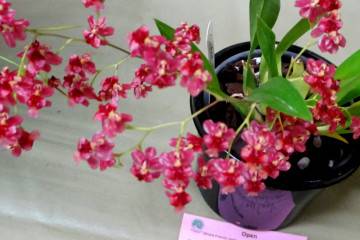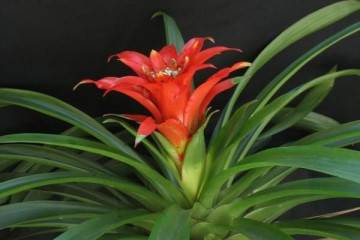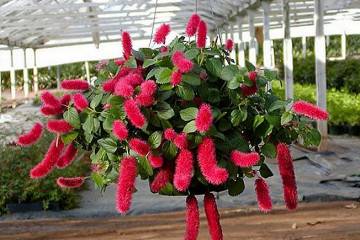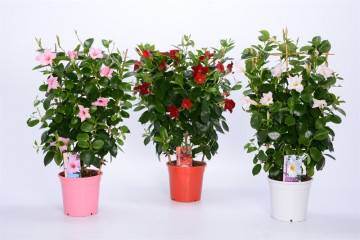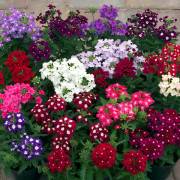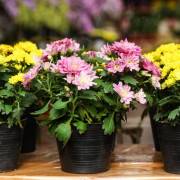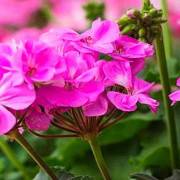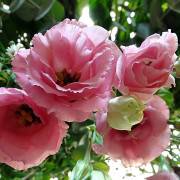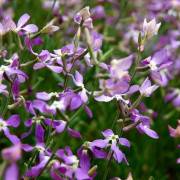Clerodendrum Ugandan - home care
Content:
Clerodendrum Ugandan is distinguished by non-standard shapes and a variety of colors, native to East Africa. There is also Uruguayan Clerodendrum, but this is a completely different species. In nature, Ugandan can be seen in the form of an evergreen bush. Sometimes it reaches a height of 2 m (approximately like a thuja of the forest-tundra or northern taiga zone). Stems often climb on nearby plants or objects. Over time, this plant evolves into a vine.
Home care for Ugandan Clerodendrum
Clerodendron Ugandan requires special care, you will not relax with it. The plant grows dynamically. In this regard, it is necessary to water with a large amount of settled water. The soil is moistened as the substrate dries. The faster the plant absorbs water, the faster the next watering is needed.
You can water less clerodendrum after it has completely faded. During cold weather, you should be careful. At this time, it is worth watering to a minimum, and also slightly moistening the soil. It is worth making special feeding for ornamental plants twice a month.
If the fertilizer contains a lot of nitrogen, then in the initial stages the crop may have many shoots and greenery. Preparations containing potassium and phosphorus are best added before summer.
Only young plants do not need special pruning. But do not forget about the shape of the crown, because at the moment when the clerodendrum grows, it needs to be pruned. 2 m is the maximum size in the wild, at home it can also reach this size, so you need to regularly prune.
All inflorescences and shoots are shortened exactly half before the beginning of the growing season. Thus, the plant will turn into a bush and remain decorative. If everything is done correctly, you will get a small-sized standard tree, which is convenient to keep in the room. The trunk is formed by trimming the largest shoots, and then the lateral branches are cut off. This procedure will strengthen the plant itself and further strengthen the crown.
Seat selection
This specimen loves warmth and bright sun. The pot is best placed on the south, south-east or south-west window. If you place the plant in the north, then the sun's rays will not be enough for flowering.
Temperature
In winter, a temperature of 12-16 ° C is enough for a flower, but in summer any one will do. In winter, this representative will not bloom if left in a cool place.
Watering
You can take warm tap water. It must be poured into the soil in large quantities, but not very much, so as not to cause harm. If you pour it with melt water, the effect for a flowering tree will be impressive.
There are no clear intervals in watering. Everything is determined individually. In the summer they are watered about twice a week, and in the winter three times a month.
Spraying
The plant is sprayed daily with room temperature water. The irrigation procedure is shortened during the onset of the dormant period.But it is impossible to completely stop spraying, since the African representative may dry out.
Humidity
Clerodendrum has special requirements for air humidity. This is due to its exotic roots. The humidity must be constantly increased. To do this, it is advisable to spray the foliage all year round. Also, the flower is kept in a pallet with wet pebbles. It is forbidden to keep the plant in a draft and pour water on the inflorescences.
Priming
A light and nutritious soil is required. To propagate a flower, ordinary earth, sand and peat are taken. If it is not possible to prepare the composition at home, then you can purchase a special soil for tropical plants. Expanded clay or broken brick is poured onto the bottom with a layer of 2-3 cm to form a drainage layer in the pot.
Top dressing
Fertilize an exotic handsome man every two weeks. Specialty foods can be found in specialized stores, but the usual ones for flowering houseplants will work as well.
Transfer
It is transplanted into a large pot in the spring. Young specimens are transplanted in May. For abundant flowering, it is recommended to carry out two transplants per year.
The next pot should be deeper and wider. Expanded clay and broken brick are also poured as drainage to the bottom of the container. A layer of new soil is added on top of the drain. The earth should be slightly acidic. The mixture is made by yourself or purchased at the store. To do this, mix peat, sand and turf soil, and then disinfect it in the oven.
The transfer is carried out by the transshipment method. The space that remains is covered with earth. The air temperature in the room where the transplanted specimen is placed should be in the range of 20-22 ° C.
Pruning
If you want to get an acceptable and original plant shape, you need to prune it on a regular basis. To achieve abundant summer flowering, it is necessary to prune lignified twigs by 1/3. Leave 7 cm shoots only if you want to form a shrub. Lateral shoots are cut close to the trunk to form a decorative tree.
A year later, the same shoots are cut off at the bottom. The upper ones are shortened after they reach about 70 cm in height. During the summer, they pluck off the excess processes.
How to propagate
There are many ways to breed, but for the clerodendrum, there are mainly two.
Seeds
For planting, you need a substrate from sod land. It is prepared in February or March. It is advisable to grow in a greenhouse in the early stages. After 1.5-2 months, the first shoots will appear. This will happen due to frequent ventilation and moderate humidity levels.
Each seedling is transplanted into a new glass when more than four true leaves have appeared.
Cuttings
For propagation, you need to get cuttings. There are many of them left after the planned pruning. The branch should be with 2-3 internodes and from the top of the shoot. It is easy for him to take root in soil and water. It will develop much faster in the greenhouse.
Dormant period
The clerodendrum should rest for one and a half or two months. As a rule, it gives out for the winter period. The main conditions are rare watering and cool air. Old branches should be removed at the end of winter and watering should be gradually increased.
Parasite attack
Pests are frequent guests on the plant. The most common among them:
- whitefly. Leaves a bloom of white. Foliage and flowers dry up from it. The plant is treated with insecticides, and the affected parts are removed by insects;
- spider mite. It is problematic to see it.Internode cobwebs and limp leaves indicate its appearance. Minor damages are repaired with laundry soap. Insecticides will help with high levels of damage. To avoid such situations, you need to spray the leaves with water every day;
- shield. It can be found on stems and leaves. It protects eggs and itself with a shell, so it is very difficult to resist it. To do this, first collect the parasites with their hands, and then the flower is treated with an insecticide;
- aphids are the most popular parasite. It leads to wilting of the plant by sucking the juices out of it. The whole plant is treated with insecticides, and the affected areas are removed.
Frequent growing problems
Rare watering and dry air provoke falling and yellowing of leaves and buds. Due to cold drafts, the leaves darken. Clerodendrum is very sensitive to its habitat. Temperature, mode and air humidity play a key role for him. The exotic representative must be carefully looked after. The better you look after, the more beautiful it will become.
Clerodendrum from Uganda can be grown at home, although you will have to tinker. The main thing is attentiveness and regular checks for diseases or complications. In order for a representative of the flora to be always beautiful, you need to carry out a number of procedures, which are described in the material above.
